General Ledger User Guide
While most business owners don't need to ever look directly at the General Ledger, many bookkeepers prefer to perform their reviews directly in the General Ledger.
The General Ledger is a summarized version of the Journal, making it easier to understand the transactions and journal entries contributing to the total of each account in the Chart of Accounts and financial statements.
Getting started with the General Ledger
The General Ledger can be used to view all of the transactions and journal entries for a single GL account. When navigating to the General Ledger, there will be a prompt to select which General Ledger account to view. The date range and number of rows displayed can be adjusted using the filters.
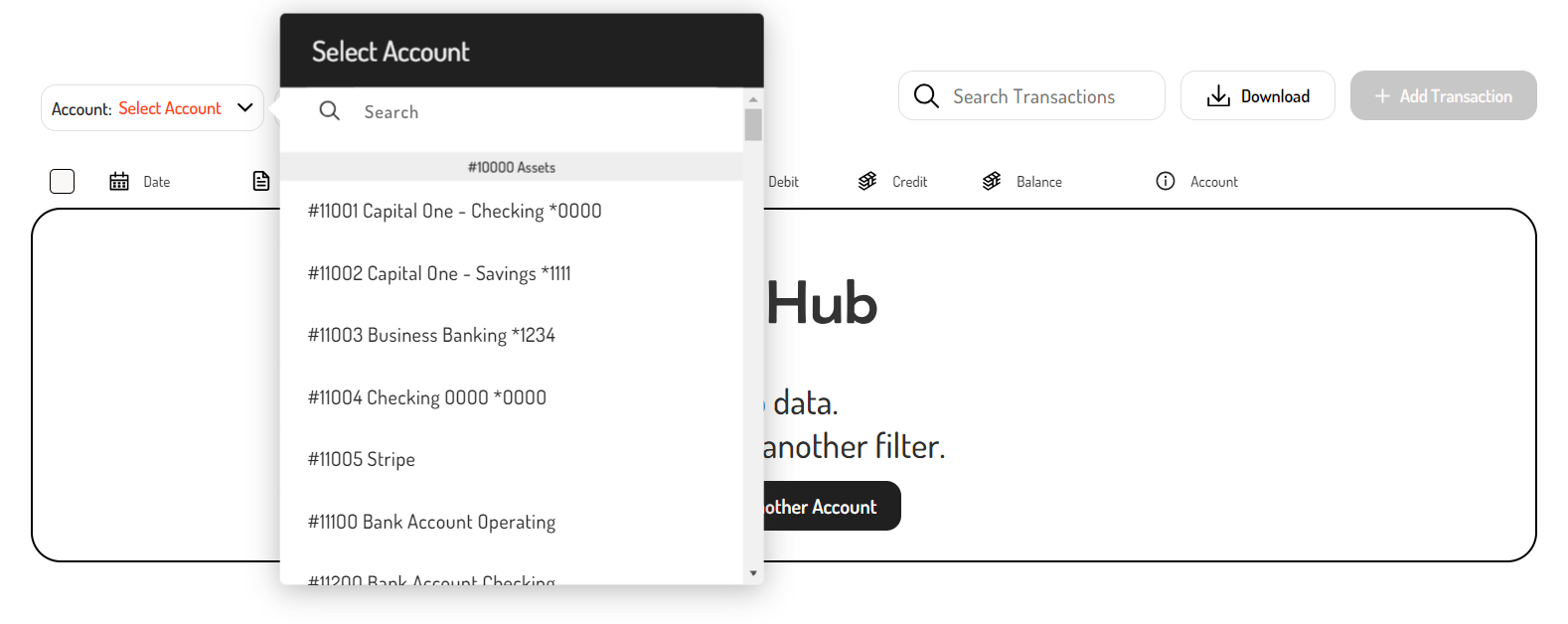
The General Ledger will list the transactions in date ascending order and show a few things:
- Date - The date of the transaction or manual journal entry.
- Type - The type of transaction it is (Expense, Income, Tax Payment, Bank Transfer, Manual Journal Entry, etc).
- Debit or Credit - The net debit or credit attributed to the selected General Ledger account.
- Balance - The running balance for the General Ledger account.
- Account - The other account the transaction is associated with.
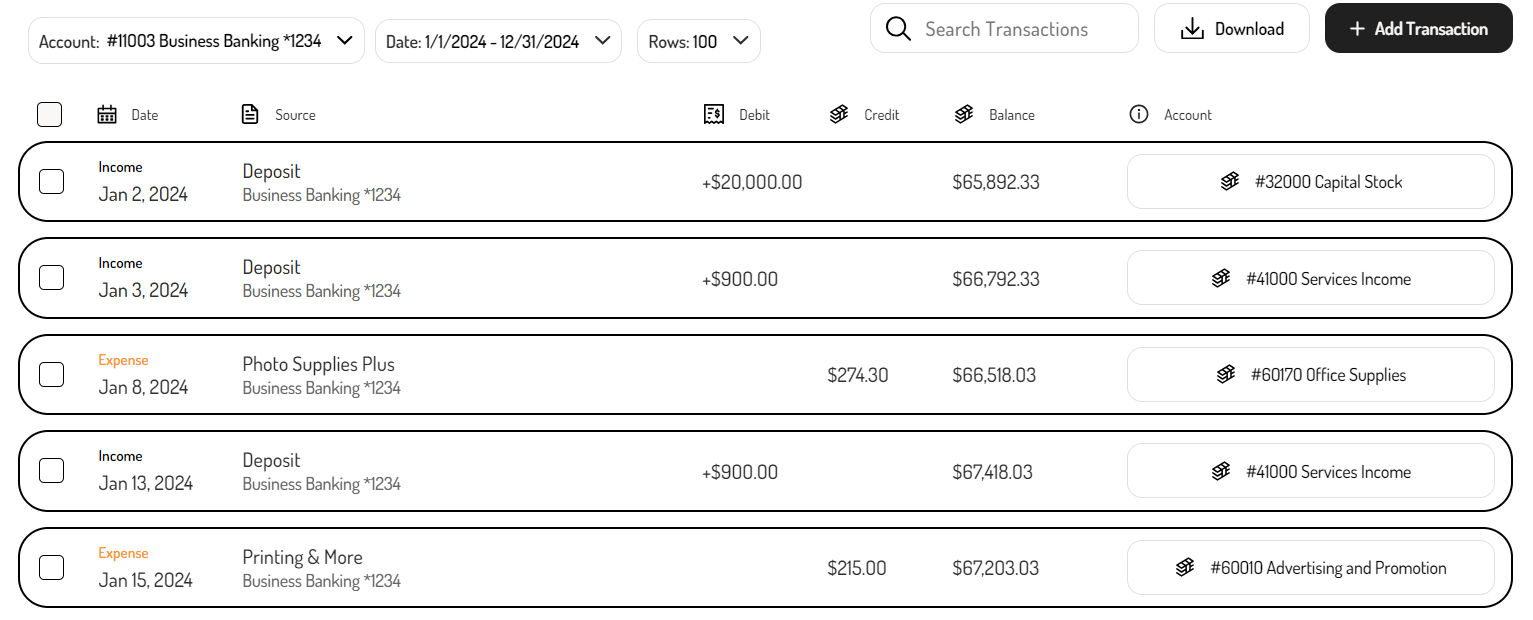
Navigating the General Ledger
By default, the General Ledger will display all transactions for the current year in ascending date order. As needed, the filters and search feature can be used to locate specific transactions.
Using the Filters
Filters can be used to filter the transactions by Account, Date, or Rows.
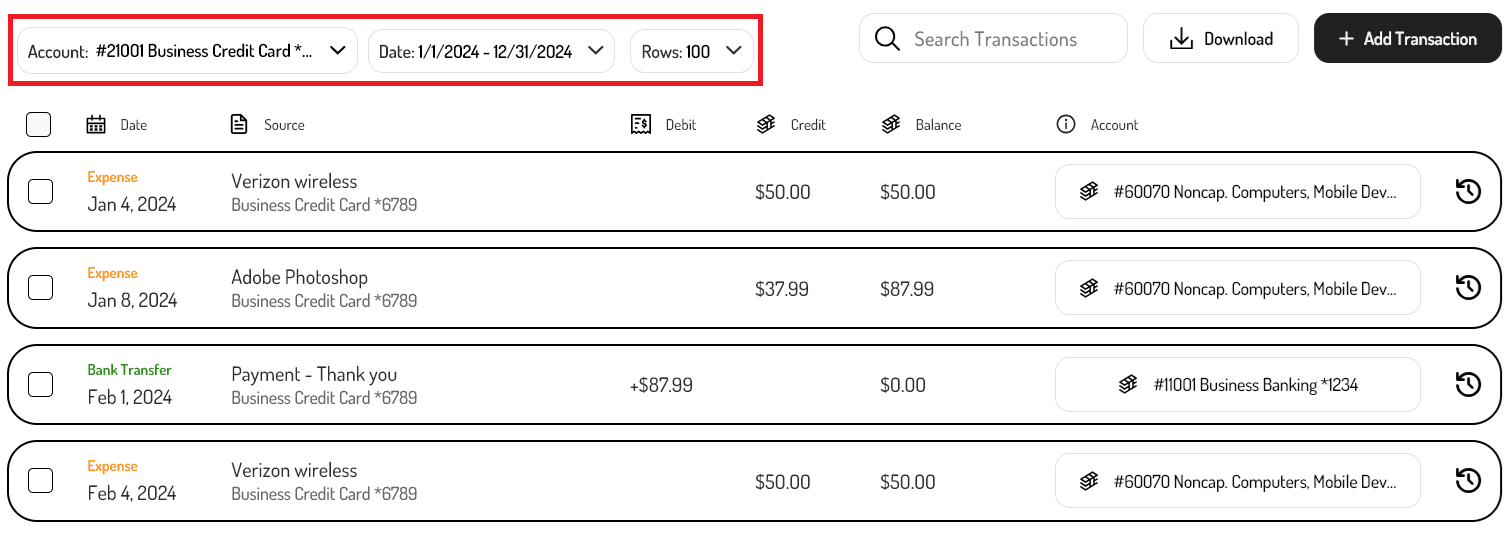
Account Filter
The account filter can be used to select a specific General Ledger account to view.
Date Filter
The date filter can be used to view transactions from a specific timeframe. These options include:
- Current Year - All from the current year.
- Past Year - All from the past year.
- Custom Range - All transactions from the custom timeframe that is set.
Rows Filter
The rows filter can be set to specify how many transactions are displayed on each page. These options range up to 250.
Using the search feature
The search feature can be used to search for transactions based on the vendor, amount, or category. This is helpful for locating a specific transactions.
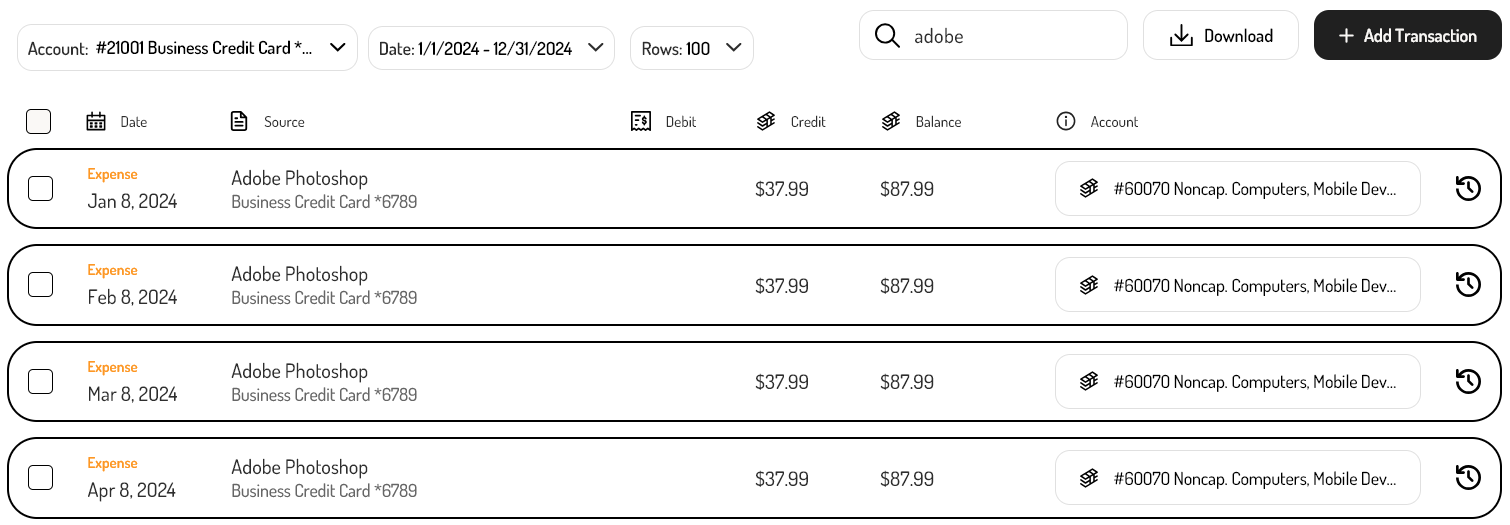
Making edits to the General Ledger
To make a change, click on the transaction or journal entry, and it will open so edits can be made. If it’s associated with a bank transaction tracked in the Transactions Dashboard, it will show all of the transaction details. If it’s a manual journal entry, it will show all of the details that were entered.
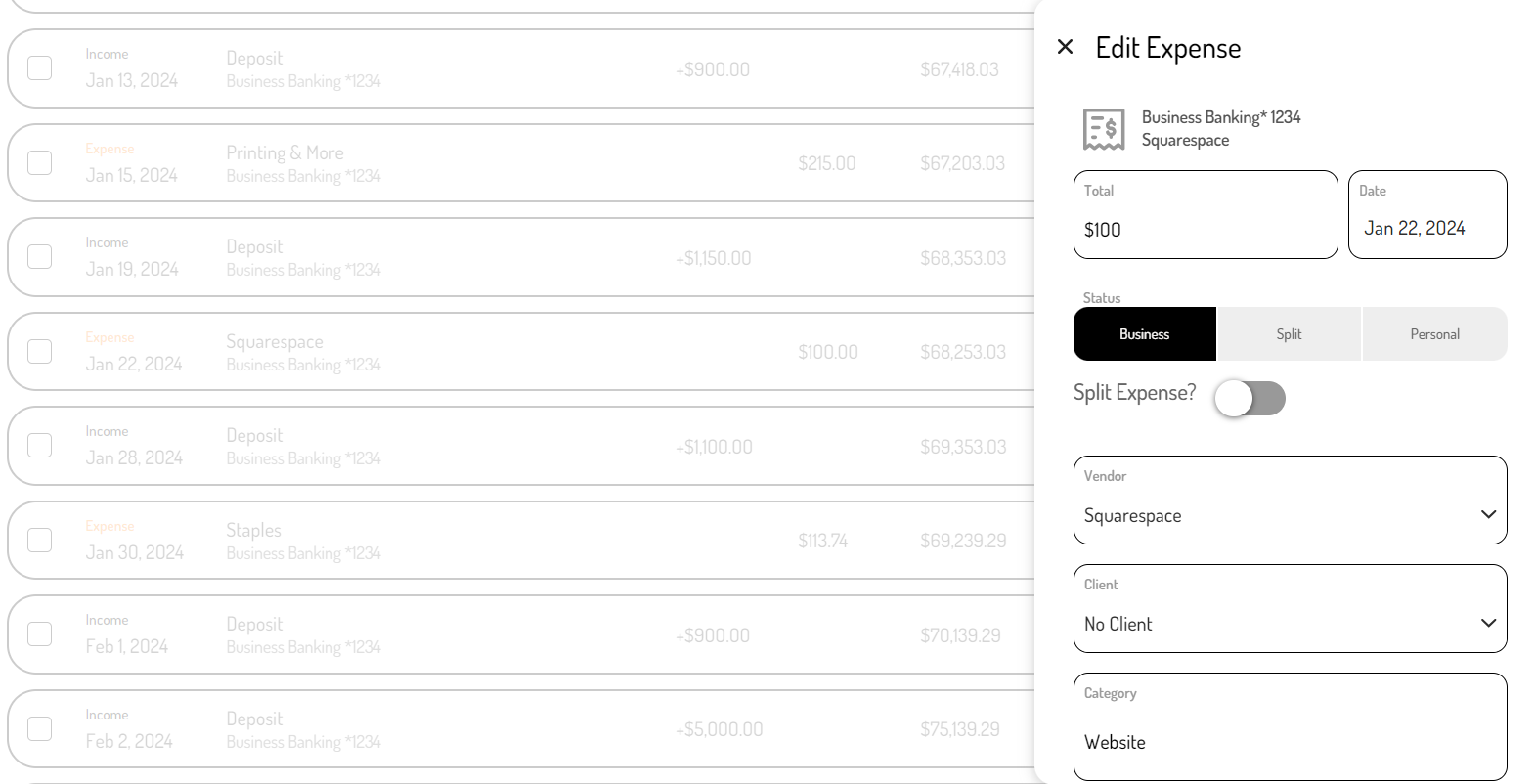
Adding new entries to the General Ledger
Transactions and manual journal entries can be added directly from the General Ledger by clicking the ‘+Add Transaction’ button and selecting which type of transaction.
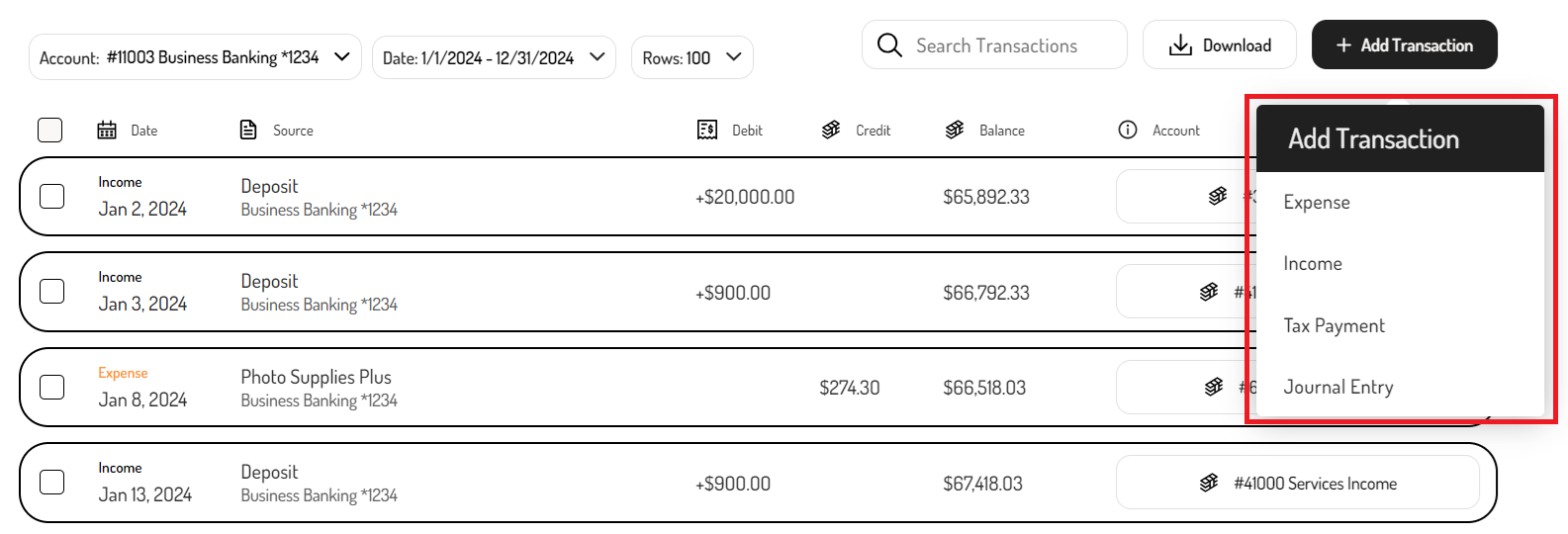
Exporting the General Ledger
In addition to viewing the General Ledger directly in the Embedded experience, it can also be exported. When exporting the General Ledger, there is an option to export a single account or all accounts (i.e. the entire General Ledger).
To export the General Ledger:
-
Navigate to the General Ledger
-
Click 'Download'

-
Select the date range and account to be exported
-
To export the entire General Ledger, select the 'All Accounts' option at the top of the list.
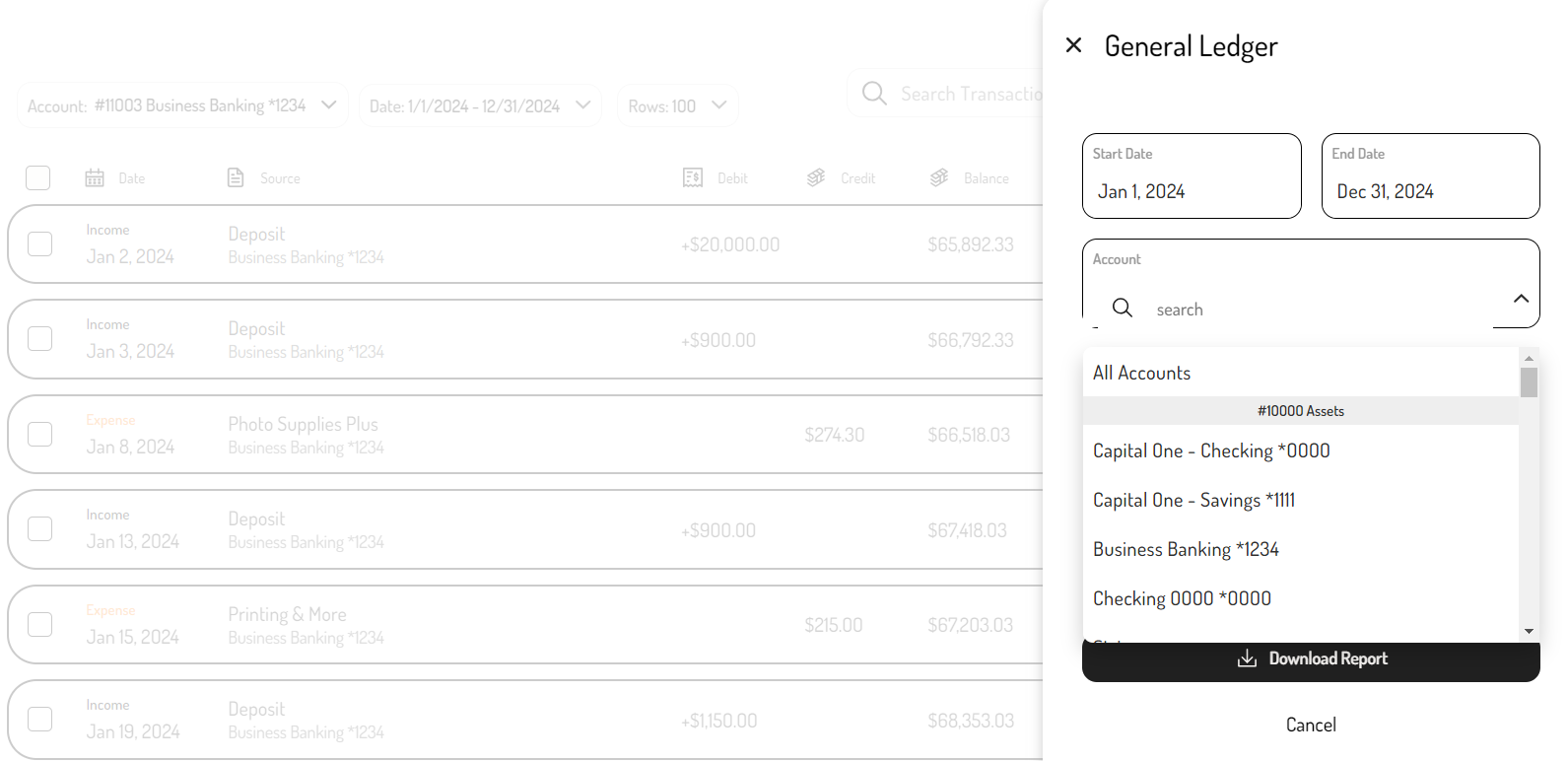
-
-
Click 'Download Report'
-
The General Ledger Report will be downloaded and saved to the device. It can be opened and viewed in any spreadsheet program (i.e. Excel, Google Sheets, etc)
Updated 2 months ago
